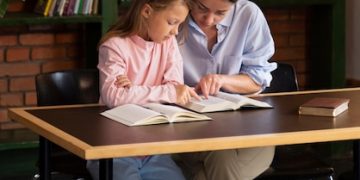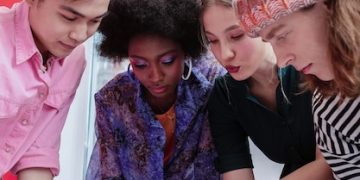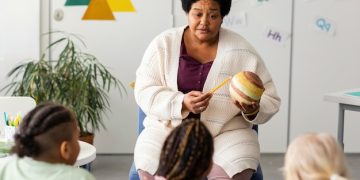Learning Disabilities: Options for US Students – A Comprehensive Guide
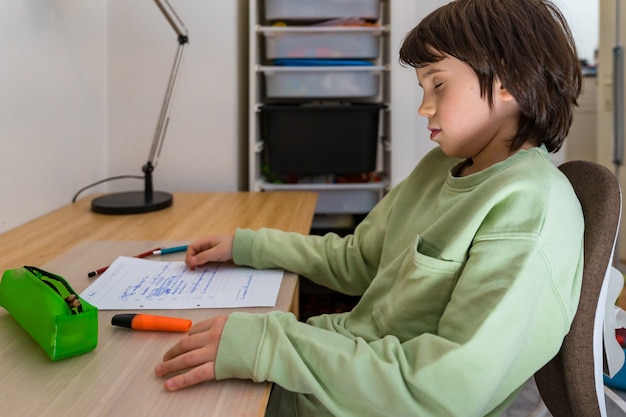
A comprehensive overview of the options available for US students with learning disabilities, including individualized education programs (IEPs), accommodations, assistive technology, specialized instruction, and advocacy resources.
Navigating the US education system can be challenging, especially for students with learning disabilities. Understanding the available options is crucial for ensuring these students receive the support they need to thrive. This guide provides a comprehensive overview of what are the options for US students with learning disabilities? A comprehensive Overview.
Understanding Learning Disabilities in the US Education System
Learning disabilities are neurological disorders that affect a person’s ability to process information. These disabilities can manifest in various ways, impacting reading, writing, math, and other academic skills. In the US education system, identifying and addressing these challenges is paramount to ensuring every student has the opportunity to succeed.
Common Types of Learning Disabilities
Several types of learning disabilities are prevalent among students in the US. Recognizing these specific challenges is the first step in providing appropriate support.
- Dyslexia: A reading disorder characterized by difficulties with accurate and/or fluent word recognition and by poor spelling and decoding abilities.
- Dysgraphia: A writing disability that affects handwriting, spelling, and the organization of written ideas.
- Dyscalculia: A math-related learning disability that involves difficulties with number concepts, arithmetic operations, and mathematical reasoning.
- Auditory Processing Disorder (APD): A condition that affects the way the brain processes auditory information, making it difficult to understand spoken language.
These descriptions offer a baseline understanding but, learning disablities can overlap or present unique challenges for each student, necessitating tailored support.
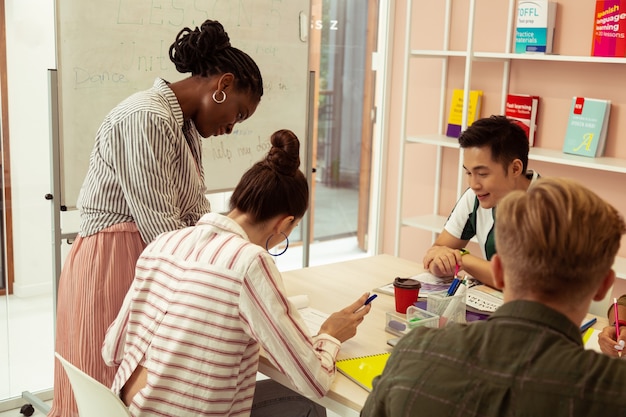
The Importance of Early Identification
Early identification of learning disabilities is crucial for providing timely interventions and support. Schools often use screening tools and assessments to identify students who may be at risk. Parents also play a vital role in recognizing potential signs of learning disabilities and advocating for their children to receive appropriate evaluations.
By understanding these foundations, families and educational institutions can partner to ensure students get personalized attention and learning programs to address specific difficulties.
Individualized Education Programs (IEPs): A cornerstone of support
An Individualized Education Program (IEP) is a legally binding document created for students with disabilities who require specialized instruction and related services. IEPs are developed by a team that includes parents, teachers, school administrators, and, when appropriate, the student themselves.
Developing an Effective IEP
The IEP development process involves several key steps to ensure that the program is tailored to the student’s specific needs.
- Assessment: Comprehensive evaluations are conducted to identify the student’s strengths and weaknesses across various academic and functional areas.
- Goal Setting: Measurable annual goals are established based on the student’s present levels of performance and identified needs.
- Services and Supports: The IEP outlines the specific special education services, accommodations, and related supports that will be provided to the student.
- Placement: The IEP team determines the most appropriate educational setting for the student, taking into consideration their individual needs and the principle of Least Restrictive Environment (LRE).
Ultimately an IEP should equip students with learning disabilities with the tools and strategies needed to reach their full academic potential.
Key Components of an IEP Document
The IEP document includes several essential components that detail the student’s educational plan.
- Present Levels of Performance (PLOP): A description of the student’s current academic and functional skills, including strengths, weaknesses, and areas of concern.
- Measurable Annual Goals: Specific, measurable, achievable, relevant, and time-bound (SMART) goals that the student is expected to achieve within a year.
- Special Education and Related Services: A list of the specialized instruction, accommodations, and related services that will be provided to the student.
- Accommodations and Modifications: Adjustments to the learning environment and instructional methods that will help the student access the general education curriculum.
Through understanding these elements, families can ensure they take active roles in IEP creation, advocating for the learning programs that best meet the needs of their students.
Classroom Accommodations and Assistive Technology
Classroom accommodations and assistive technology play a crucial role in supporting students with learning disabilities. These tools and strategies help to create a more inclusive and accessible learning environment.
Types of Classroom Accommodations
Classroom accommodations are adjustments to the learning environment or instructional methods that help students with learning disabilities overcome barriers to learning. These may include:
- Extended Time: Allowing students additional time to complete assignments and tests.
- Preferential Seating: Positioning students in the classroom to minimize distractions and maximize their ability to focus.
- Reduced Workload: Modifying assignments to reduce the amount of work required, while still covering the essential concepts.
- Use of Technology: Providing access to assistive technology devices and software to support learning.
Accommodations aim to level the playing field, enabling students with learning disabilities to demonstrate their knowledge and skills effectively.
The Role of Assistive Technology
Assistive technology refers to devices, equipment, and software that help students with disabilities access and engage with the curriculum. Some common examples include:
- Text-to-Speech Software: Programs that convert written text into spoken words, benefiting students with dyslexia or reading difficulties.
- Speech-to-Text Software: Tools that allow students to dictate their thoughts and ideas, assisting those with dysgraphia or writing challenges.
- Graphic Organizers: Visual aids that help students organize their thoughts, plan writing assignments, and understand cause-and-effect relationships.
Assistive technology can be a game-changer for students with learning disabilities, empowering them to participate more fully in the learning process.
Specialized Instruction and Tutoring Services
Specialized instruction and tutoring services provide targeted support to students with learning disabilities, addressing their specific academic needs and helping them develop essential skills.
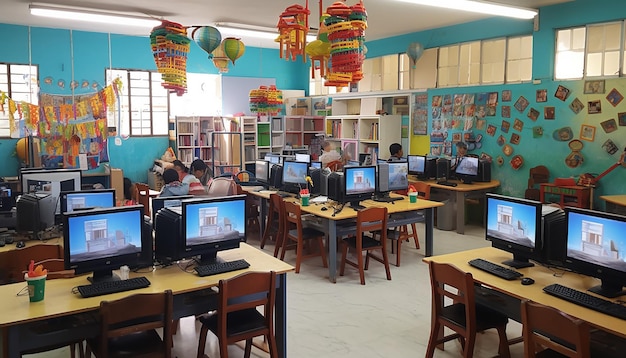
Benefits of Specialized Instruction
Specialized instruction is tailored to the individual needs of the student and is delivered by trained special education teachers or specialists. It typically involves:
- Diagnostic Teaching: Assessing the student’s current skills and identifying specific areas that need improvement.
- Multi-Sensory Instruction: Engaging multiple senses (visual, auditory, kinesthetic) to enhance learning and memory.
- Explicit Instruction: Providing clear, direct teaching of specific skills and strategies.
- Progress Monitoring: Regularly tracking the student’s progress and adjusting instruction as needed.
By employing these strategies, specialized instruction helps students build a strong foundation of skills and confidence.
Utilizing Tutoring Services
Tutoring services can supplement classroom instruction and provide students with additional support in specific subject areas. Tutors can work with students one-on-one or in small groups, offering personalized attention and targeted practice.
Tutoring sessions give them a space to catch up on assignments, delve deeper into material, or fine-tune study methods for best results.
These methods help students with learning disabilities develop the confidence and skills to succeed academically.
Advocacy and Legal Rights for Students with Learning Disabilities
Advocacy and legal rights play a critical role in ensuring that students with learning disabilities receive a fair and equitable education.
Understanding Legal Protections
Several federal laws protect the rights of students with disabilities in the US education system. These include:
- Individuals with Disabilities Education Act (IDEA): Guarantees students with disabilities the right to a free and appropriate public education (FAPE) in the least restrictive environment (LRE).
- Section 504 of the Rehabilitation Act: Prohibits discrimination against individuals with disabilities in programs and activities that receive federal funding.
- Americans with Disabilities Act (ADA): Extends civil rights protections to individuals with disabilities in various settings, including schools, colleges, and workplaces.
These laws establish a framework for ensuring that students with learning disabilities have access to the accommodations, services, and supports they need to succeed.
The Role of Advocacy Groups and Support Networks
Various advocacy groups and support networks provide information, resources, and assistance to families of children with learning disabilities. These organizations can help parents understand their rights, navigate the special education system, and advocate for their children’s needs.
Parents and caregivers can find powerful tools for championing their children’s education.
Transitioning to Higher Education and Beyond
Transitioning to higher education and beyond can be a significant milestone for students with learning disabilities. Careful planning and preparation are essential to ensure a smooth and successful transition.
Preparing for College
Students with learning disabilities who are planning to attend college should take several steps to prepare:
- Self-Advocacy Skills: Develop the ability to articulate their needs and request accommodations from professors and disability services offices.
- College Planning: College planning helps students prepare their next life phases after graduation from basic education..
- Assistive Technology Training: Become proficient in using assistive technology tools that will support their learning in college.
- Documentation: Gather all necessary documentation, such as IEPs and evaluation reports, to provide to the college’s disability services office.
By taking these steps, students can increase their chances of success in college and beyond.
Students entering this exciting and challenging new environment may utilize resources found through campus groups, tailored programs, and online services.
Career Planning and Vocational Training
Career planning and vocational training can help students with learning disabilities explore their interests, develop job skills, and prepare for employment. These opportunities can include:
- Internships and Apprenticeships: Experiential learning opportunities allow students to gain practical skills and knowledge in a real-world work environment.
- Vocational Rehabilitation Services: Government-funded programs provide counseling, training, and support to help individuals with disabilities find and maintain employment.
By connecting students with the resources and supports they need, educators and families can empower them to achieve their career goals.
| Key Point | Brief Description |
|---|---|
| 📚 IEPs | Individualized Education Programs: Tailored plans for students with learning disabilities. |
| 💻 Assistive Tech | Tools like text-to-speech help students access curriculum. |
| 👩🏫 Specialized Instruction | Targeted teaching methods by trained specialists for skill development. |
| ⚖️ Legal Rights | Guaranteed by IDEA, Section 504, and ADA for equitable education access. |
Frequently Asked Questions
▼
The most common learning disabilities include dyslexia (reading), dysgraphia (writing), and dyscalculia (math). These conditions affect how individuals process information and learn new skills.
▼
An IEP (Individualized Education Program) is a legal document for students with disabilities, created by a team including parents, teachers, administrators, and sometimes the student. It outlines goals and services.
▼
Assistive technology, such as text-to-speech software, can help students with reading challenges access the curriculum. Meanwhile, speech-to-text software supports writing.
▼
Students with learning disabilities are protected by laws such as IDEA, Section 504, and ADA, ensuring they receive a free and appropriate public education and accommodations to succeed.
▼
Parents can advocate by understanding their child’s rights, actively participating in IEP meetings, and collaborating with educators to ensure their child receives appropriate support and resources.
Conclusion
Understanding the landscape of options available for US students with learning disabilities is essential for fostering their academic and personal growth. By leveraging IEPs, accommodations, assistive technology, specialized instruction, and strong advocacy, we can empower these students to reach their full potential and lead fulfilling lives.

